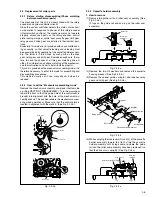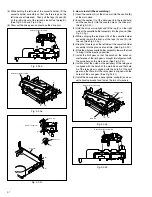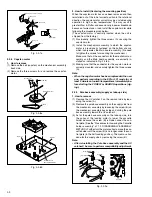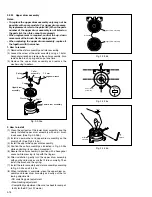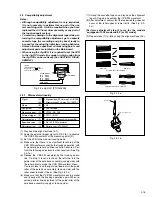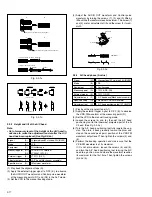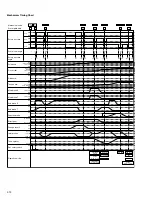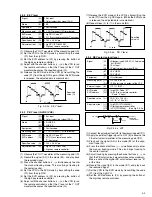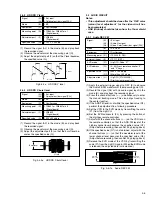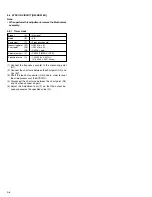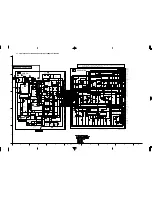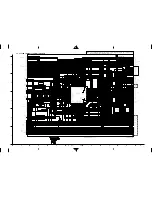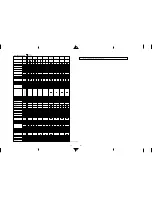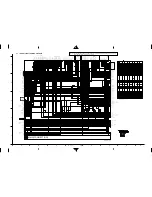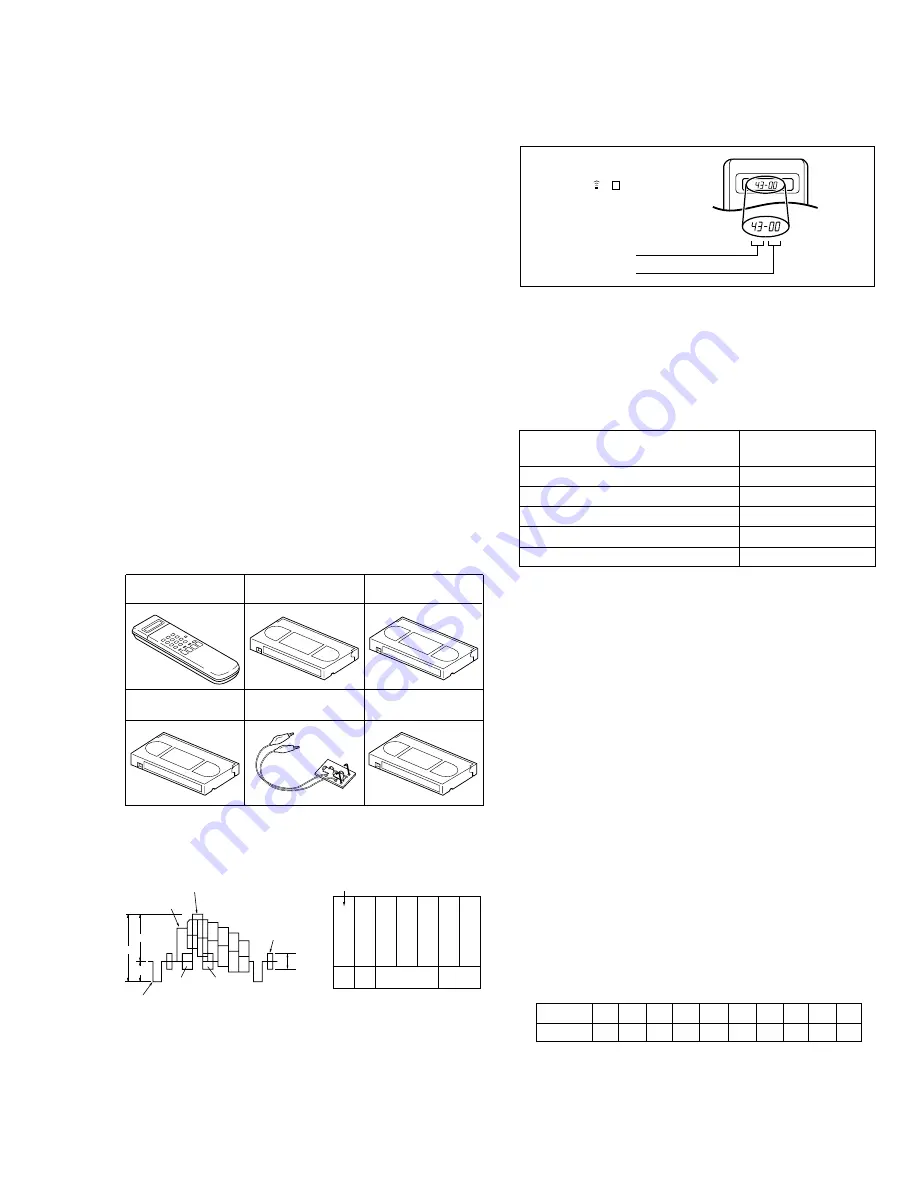
3-1
SECTION 3
ELECTRICAL ADJUSTMENT
3.1 PRECAUTION
The following adjustment procedures are not only necessary
after replacement of consumable mechanical parts or board
assemblies, but are also provided as references to be re-
ferred to when servicing the electrical circuitry.
In case of trouble with the electrical circuitry, always begin a
service by identifying the defective points by using the meas-
uring instruments as described in the following electrical ad-
justment procedures. After this, proceed to the repair, replace-
ment and/or adjustment. If the required measuring instruments
are not available in the field, do not change the adjustment
parts (variable resistor, etc.) carelessly.
3.1.1 Required test equipments
• Color (colour) television or monitor
• Oscilloscope:
wide-band, dual-trace, triggered delayed
sweep
• Frequency counter
• Signal generator: RF / IF sweep / marker
• Signal generator: stairstep, color (colour) bar [PAL]
• Recording tape
• Digit-key remote controller(provided)
3.1.2
Required adjustment tools
3.1.3 Color (colour) bar signal,Color (colour) bar pattern
Fig. 3-1-4a Jig RCU [PTU94023B]
3.1.4 Switch settings and standard precautions
The SW settings of the VCR and the standard precautions
for the electrical adjustments are as follows.
• When using the Jig RCU, set its custom code to match
the custom code of the VCR.
• Set the switches as shown below unless otherwise
specified on the relevant adjustment chart. The
switches that are not listed below can be set as de-
sired.
If the VCR is not equipped with the functions detailed
below, setup is not required.
AUTO PICTURE/VIDEO CALIBRATION/
OFF
B.E.S.T./D.S.P.C.
PICTURE CONTROL/SMART PICTURE
NORMAL/NATURAL
VIDEO STABILIZER
OFF
TBC
ON
Digital 3R
ON
VIDEO NAVIGATION/TAPE MANAGER
OFF
• Unless otherwise specified, all measuring points and
adjustment parts are located on the Main board.
• In the Signal column of the adjustment chart, “Ext. S-
input” means the Y/C separated video signal and “Ext.
input” means the composite video signal input.
Jig RCU
PTU94023B
Alignment tape
(SP, stairstep, PAL)
MHPE
Alignment tape
(LP, stairstep, PAL)
MHPE-L
LPF
PTU93006
Alignment tape
(SP stairstep, NTSC)
MHP
Alignment tape
(S-VHS, SP/LP, color (colour) bar)
MH-2H
INITIAL MODE
DATA CODE
CUSTOM CODE
43: A
CODE
53: B
CODE
6F: C
CODE
7F: D
CODE
[Data transmitting method]
Depress the “ ” ( 3 ) button
after the data code is set.
Jig RCU
3.1.5 EVR Adjustment
Some of the electrical adjustments require the adjustment
performed by the EVR system. The Main board assembly
have EEPROMs for storing the EVR adjustment data and
user setups.
Notes:
• In the EVR adjustment mode, the value is varied with
the channel buttons (+, –). The adjusted data is stored
when the setting mode changes (from PB to STOP,
when the tape speed is changed, etc.). Take care to
identify the current mode of each adjustment item
when making an adjustment.
• When changing the address setting in the EVR adjust-
ment mode, use the Jig RCU or the remote controller
having numeric keypad with which a numeric code can
be directly input.
The remote control code of the Jig RCU corresponds
to each of the digit keys on the remote controller as
follows.
• As the counter indication and remaining tape indica-
tion are not displayed FDP during the EVR adjustment
mode, check them on the TV monitor screen.
• When performing the EVR adjustment, confirm that the
FDP indication is changed to the EVR mode, as shown
below.
Digit-key
0
1
2
3
4
5
6
7
8
9
Code
20 21
22 23
24
25
26
27 28 29
(75%)
White(75%)
0.7 V
0.3 V
Horizontal sync
V
U
1V
White(100%)
Yellow
Cyan
Green
Magenta
Red
Blue
Burst
0.3 V
V(R-Y)
U(B-Y)
White
Yellow
Cyan
Green
Magenta
Red
Blue
U
Black
White
100%
V
s
Colour bar signal [PAL]
s
Colour bar pattern [PAL]

